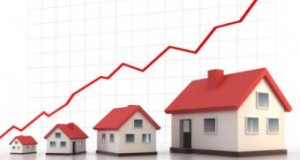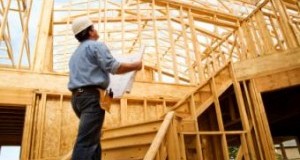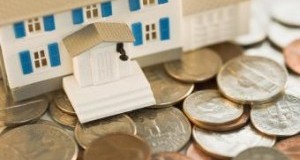Despite the HMI’s positive overall outlook, however, the index for single-family housing sales actually dropped by one point over the last quarter, decreasing from 59 to 58. According to the Emrath, this was likely due to a drop in buyer traffic, caused by rough winter weather throughout many parts of the country.
Read More »Economists Expect Housing to Move Steadily in 2015, Pick Up Pace Next Year
The housing market will move steadily in 2015 driven by solid labor market improvements, low mortgage rates, an economy that is growing, and pent-up demand–but the pace should really pick up next year, according to economists who attended the National Association of Home Builders (NAHB) 2015 Spring Construction Forecast Webinar earlier this week.
Read More »Housing Starts Show Modest Gains
Though the gains in starts and permits are modest‒‒not to mention multi-faceted‒‒the upturn is certainly more welcome news to industry pundits than the numbers that came from February. That month, the U.S. Census Bureau and U.S. Department of Housing and Urban Development reported that privately-owned housing starts had hit their lowest rate in years. Housing starts were down 17 percent from January and 3.3 percent below the February prior.
Read More »Survey Indicates Builder Confidence on the Rise
But improved builder confidence isn’t the only thing the HMI survey found. The report also shows jumps in other measurables as well. Builders’ expected buyer traffic increased four points, current sales conditions rose three points, and future sales expectations saw an increase, too, jumping from 59 to 64 points in the last month. According to NAHB Chief Economist David Crowe, these sales expectations numbers are at the highest level they’ve been all year–a good omen for the months to come.
Read More »NAHB Says Single-Family Residential Construction Generates Millions for Communities
According to the findings, construction of 100 single-family homes pumps an average of $28.7 million in income into a typical local economy in the first year. This, the NAHB says, adds $3.6 million to local tax rolls while providing 394 new jobs. Annually recurring benefits after construction is completed, on average, generate $4.1 million in local income, $1 million in taxes, and 69 local jobs
Read More »Survey: More Homebuyers Want Energy-Efficient Homes
An NAHB survey of single-family home builders revealed that nearly 25 percent of builders installed alternative energy-producing equipment in new construction. This includes geothermal heat pumps and photovoltaic solar panels. The current 30-percent tax credit available for homeowners who install this equipment is set to expire at the end of 2016, which makes this a good time for interested buyers to consider purchases.
Read More »Builder Confidence Drops Slightly in March
Two of the three HMI components posted losses in March. The component gauging current sales conditions fell three points to 58 while the component measuring buyer traffic dropped two points to 37. The gauge charting sales expectations in the next six months held steady at 59.
Read More »Survey: Labor Force for Residential Construction is 3.5 Million Strong
The NAHB residential construction employment estimates include self-employed workers. Counting self-employed is particularly important in the home building industry since they traditionally make up a larger share of the labor force. According to the 2013 ACS, one out of four construction workers is self-employed, while an economy-wide average does not reach 10 percent of the employed labor force.
Read More »Residential AD&C Loans Increase Slightly to End 2014
Data released from the FDIC and NAHB show the stock of 1-4 unit residential loans rose by $1.158 billion during the fourth quarter. That is an increase of 2.23 percent. While limited availability for construction loans has been preventing a rebound in home construction, residential loan stock has been rising for the past two years.
Read More »Home Affordability Inches Up in Q4
Using home price data from CoreLogic, NAHB estimated that 62.8 percent of homes sold at the national median price in Q4 were affordable to families earning the U.S. median income of $63,900. That figure was up 1 percentage point from the third quarter.
Read More » theMReport.com Your trusted source for mortgage banking news
theMReport.com Your trusted source for mortgage banking news






